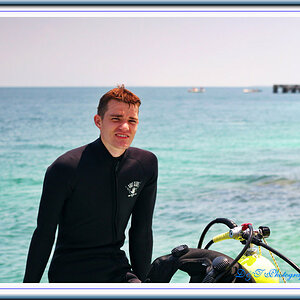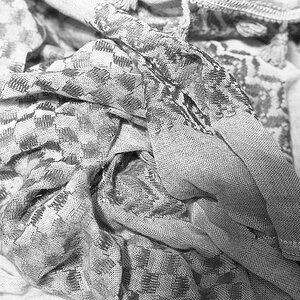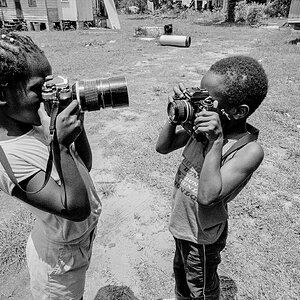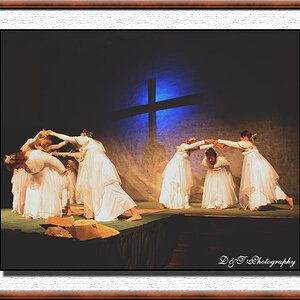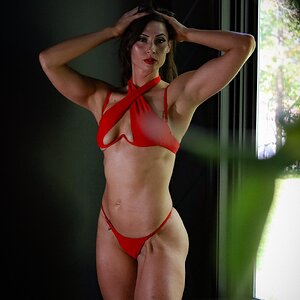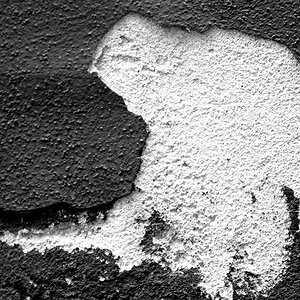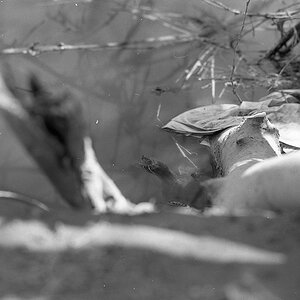BHuij
TPF Noob!
- Joined
- Feb 24, 2013
- Messages
- 10
- Reaction score
- 0
- Location
- Utah
- Website
- www.impactphotographyut.com
- Can others edit my Photos
- Photos NOT OK to edit
Hey everyone! I'm getting towards the end of my rope here with a scanning issue.
I use a Nikon CoolScan 4000 and Vuescan to scan my 35mm film. It's always given me fantastic results with all the B&W film I've scanned on it (that is... once I learned how to do it correctly). I recently shot some new Portra 400 to see how I liked it. It came back from the lab, and I eagerly starting running it through the scanner, with very disappointing results. The scans come out blueish, grainy, and just overall muddy. I also had a problem with them looking about 3 stops underexposed in the preview. I of course reset the black & white points using the histogram before final scanning, but it seems like the scanner is basically just raising the gamma of the image (which would explain the grainy, muddy look to the scans). I also see lots of little scratches all over the film that are most likely a result of rough processing.
For a while, I just figured I had messed up my film during shooting somehow. I filed it away, bought a roll of Portra 160 in medium format to see if I could get better results out of that, and moved on with my life. The other day though, I decided to go run my film through the scanner we have at work (I work at a camera store/photo&print lab). It's a big old Noritsu. The results came out incredible, MUCH more like the photos I saw on Flickr that made me want to buy the film myself and try it out (this kind of stuff):
South Beach Portra 400 re-scan (4) | Flickr - Photo Sharing!
Agnes Lim the Third | Flickr - Photo Sharing!
The tones were nice and warm, the grain seemed to be missing, I didn't see any scratches, and the general look of the images was just very pleasing. I'm almost positive now that I didn't mess up my film. I must just be scanning wrong. So for those of you more experienced in these kinds of matters, here's my scanning process:
For each roll:
1. Preview the first frame of the roll
2. Select an area of pure orange plastic mask, lock exposure
3. Re-preview with new exposure, lock film base color
4. Re-preview, adjust crop box and histogram to contain all the info on the negative (seems to require a lot of brightening consistently; I slide the white point slider all the way over to the left as far as it needs to go)
5. Scan (4000DPI, 2 passes), make final adjustments to histogram sliders to make sure I'm getting all the data
6. Save (DNG)
7. Repeat steps 4-6 for all frames in roll
Even after importing to Lightroom and adjusting the white balance there, I can't seem to recapture the nice pleasant warm tones I've come to associate with Portra in my head. The Noritsu at work seemed to get them perfectly.
So... help? I'd like to learn to scan these guys correctly on my home scanner so that when I move on from this job I don't lose my ability to scan my color film with high quality.

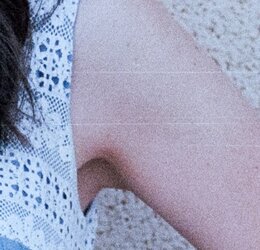
Edit: Here are some photos. These are straight out of the scanner, with no WB or exposure adjustments or anything. Don't look very good, do they? Notice the blueishness, the muddy shadows (and basically muddy everything), the bad grain, and the scratches all over the place in the 100% crop.
I use a Nikon CoolScan 4000 and Vuescan to scan my 35mm film. It's always given me fantastic results with all the B&W film I've scanned on it (that is... once I learned how to do it correctly). I recently shot some new Portra 400 to see how I liked it. It came back from the lab, and I eagerly starting running it through the scanner, with very disappointing results. The scans come out blueish, grainy, and just overall muddy. I also had a problem with them looking about 3 stops underexposed in the preview. I of course reset the black & white points using the histogram before final scanning, but it seems like the scanner is basically just raising the gamma of the image (which would explain the grainy, muddy look to the scans). I also see lots of little scratches all over the film that are most likely a result of rough processing.
For a while, I just figured I had messed up my film during shooting somehow. I filed it away, bought a roll of Portra 160 in medium format to see if I could get better results out of that, and moved on with my life. The other day though, I decided to go run my film through the scanner we have at work (I work at a camera store/photo&print lab). It's a big old Noritsu. The results came out incredible, MUCH more like the photos I saw on Flickr that made me want to buy the film myself and try it out (this kind of stuff):
South Beach Portra 400 re-scan (4) | Flickr - Photo Sharing!
Agnes Lim the Third | Flickr - Photo Sharing!
The tones were nice and warm, the grain seemed to be missing, I didn't see any scratches, and the general look of the images was just very pleasing. I'm almost positive now that I didn't mess up my film. I must just be scanning wrong. So for those of you more experienced in these kinds of matters, here's my scanning process:
For each roll:
1. Preview the first frame of the roll
2. Select an area of pure orange plastic mask, lock exposure
3. Re-preview with new exposure, lock film base color
4. Re-preview, adjust crop box and histogram to contain all the info on the negative (seems to require a lot of brightening consistently; I slide the white point slider all the way over to the left as far as it needs to go)
5. Scan (4000DPI, 2 passes), make final adjustments to histogram sliders to make sure I'm getting all the data
6. Save (DNG)
7. Repeat steps 4-6 for all frames in roll
Even after importing to Lightroom and adjusting the white balance there, I can't seem to recapture the nice pleasant warm tones I've come to associate with Portra in my head. The Noritsu at work seemed to get them perfectly.
So... help? I'd like to learn to scan these guys correctly on my home scanner so that when I move on from this job I don't lose my ability to scan my color film with high quality.


Edit: Here are some photos. These are straight out of the scanner, with no WB or exposure adjustments or anything. Don't look very good, do they? Notice the blueishness, the muddy shadows (and basically muddy everything), the bad grain, and the scratches all over the place in the 100% crop.
Last edited:


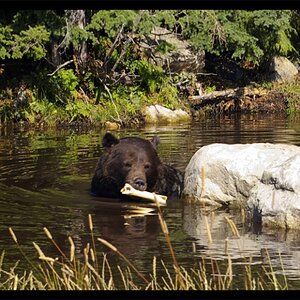
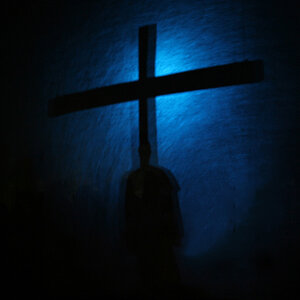
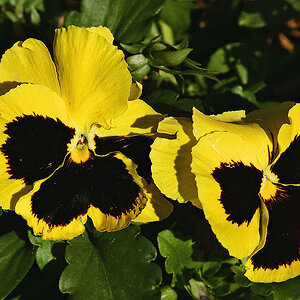
![[No title]](/data/xfmg/thumbnail/34/34688-a1ead83a3067b449d62078d1170e00f6.jpg?1619736603)
